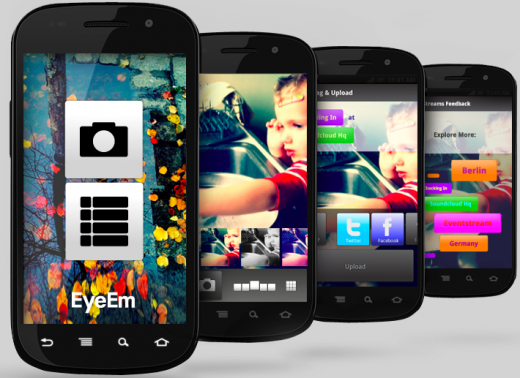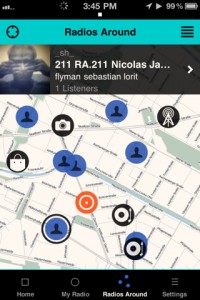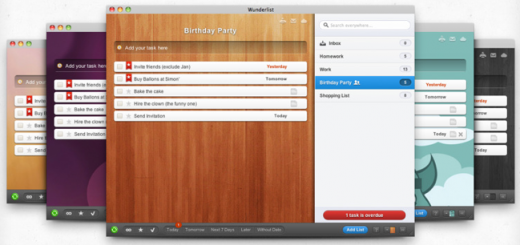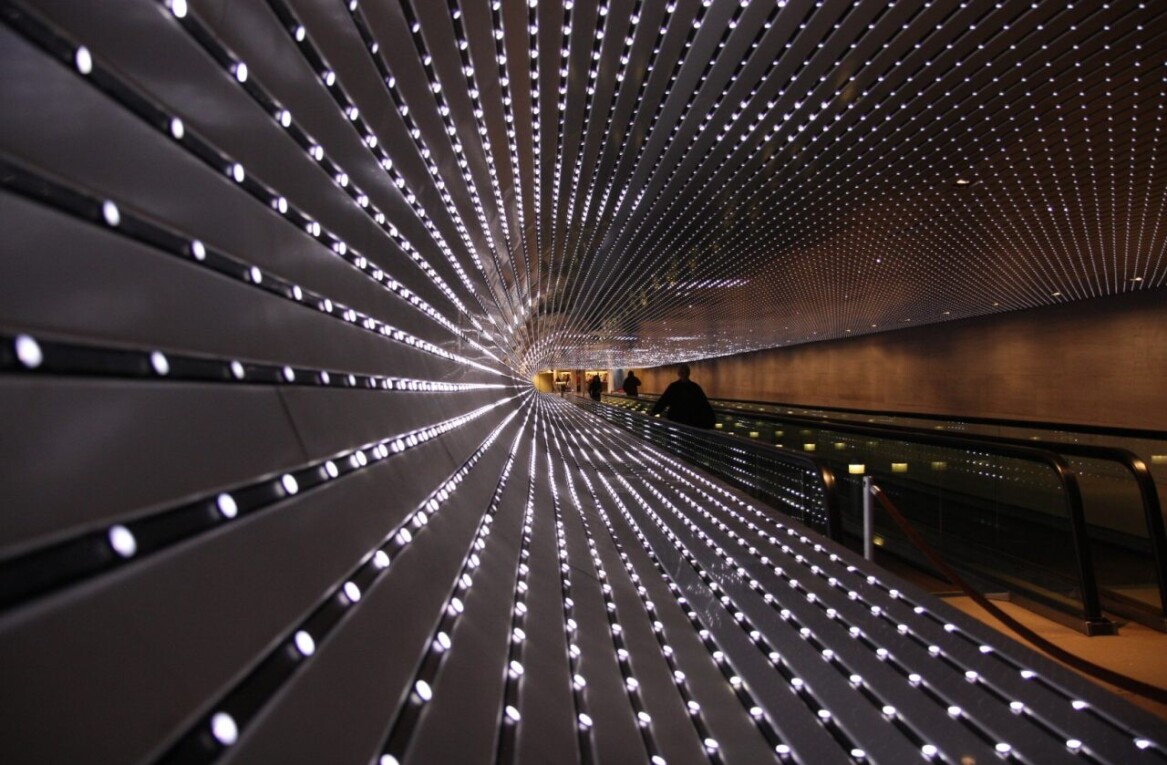
When I visited the German capital city of Berlin this week, I took the opportunity to meet as many tech startup entrepreneurs as I possibly could. As they showed me the apps they’d developed, one theme ran through all of them – they were all good-looking, and many of them were world-class gorgeous.
Sure, designers from across Europe create very attractive apps, but in many cases they lack that extra sheen and attention to detail that helps make apps from Silicon Valley look that little bit ‘better’, even if functionally there may not be much difference, regardless of where the app was made.
Many apps from Berlin seem to have that extra something, and even though you may not have heard of many of the latest generation of startups based in the city yet, if you try their products, you’ll see a flair for design shine through.
Berlin style
I asked some members of Berlin’s tech startup scene for their favourite examples of the kind of design flair I’m talking about. Here are a few names that commonly cropped up.
EyeEm is a photo sharing app that takes a little bit of Instagram, a pinch of Color and a sprinkling of Photovine and creates a new way of sharing photos that automatically adds context based on who you’re with, where you are and what you’re photographing. A beautifully simple interface makes some powerful behind-the-scenes technology easy to understand for anyone. While its location-centric approach to photo sharing might not be for everyone, there’s no denying that it’s a beautiful app to look at and use.
WahWah.fm is an app that allows you to share the music you’re listening to on your iPhone with other people, so that they listen to exactly the same thing as you. It’s something of a Turntable.fm for people on the go, creating a radio station right from your phone. The design flair in the interface is stunning.
Wunderlist from 6Wunderkinder is a cross-platform to-do list service that shuns the usual functional look of the genre for something a lot more stylish.
SoundCloud is perhaps the best known Berlin startup right now, and the UI for its social audio platform is a thing of beauty. Just look at these example shots from its iPhone app, for example.
There are many more examples out there, Readmill, which we praised for its looks just this week, for example. There are others which we can’t mention yet, as they want to keep below the radar. However, Amen and Gidsy (both yet to officially launch) are getting tongues wagging in the cafes of Berlin amongst those who have used them.
Why do apps from Berlin look so good?
To understand why apps from one city would have a common theme of great design, I talked to the people who should know – people involved in German startups.
“Berlin as a city is slick and sexy. That’s starting to show in tech products built in the city,” explains David Noël, who has the role of SoundCloud Evangelist.
“I believe that this is certainly influenced by the nature of talent that Berlin attracts,” Noël continues. “Looking at other larger cities in Germany, Berlin has been an attractive city for artists, designers, architects, photographers, musicians etc. since the 90s. I think that it’s the mix of aesthetics, a sense and urge of constant re-invention and creativity. Throw in some edge and underground and you’ll see that many approaches to design – not only tech and user experience – reflect what the city is about.”
“Berlin has a great history of Design and Art in general,” says Nikolas Schoppmeier of photo sharing startup TaDaa. “It also has a breathtaking history politically and culturally, which I think is tangible at every corner, especially in East Berlin.”
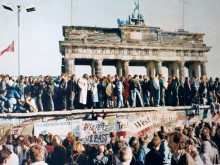 Indeed, Schoppmeier sees the tearing down of the Berlin Wall in 1989 as a key contributing factor, as it attracted artists to the city. “You would not believe how extreme this event was for a city the size of Berlin. East Berlin (where most of the creative stuff happens now) really was a ruin. Virtually no industry or jobs, most houses without central heating. Bullet holes from the war were everywhere.
Indeed, Schoppmeier sees the tearing down of the Berlin Wall in 1989 as a key contributing factor, as it attracted artists to the city. “You would not believe how extreme this event was for a city the size of Berlin. East Berlin (where most of the creative stuff happens now) really was a ruin. Virtually no industry or jobs, most houses without central heating. Bullet holes from the war were everywhere.
“Over the next years this attracted the artistic and more adventurous types rather than business people. And students – for a while almost everyone wanted to go to uni in Berlin, just because it was this new cool place to be and stuff was happening there. Things were changing so fast. In no time they built this unique culture of artsy bars, clubs and galleries that is still somewhat there.
“Now Berlin has evolved further,” continues Schommeier. “For the last 10 years or so, more and more money has made its way to Berlin, because houses got nicer, more government people moved in, and lots of media companies came back from Hamburg and other parts of the country. While some quarters have lost their edginess with that general trend of gentrification, this also led to business finally happening here.”
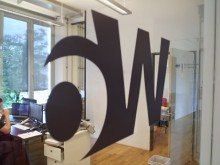 So, Berlin’s artistic heritage and the gradual resurrection of the capital as a business hub appear to be creating the perfect conditions for ambitious startups with a visually creative flair to flourish. That’s a view shared by 6Wunderkinder CEO Christian Reber.
So, Berlin’s artistic heritage and the gradual resurrection of the capital as a business hub appear to be creating the perfect conditions for ambitious startups with a visually creative flair to flourish. That’s a view shared by 6Wunderkinder CEO Christian Reber.
“The new-generation startups and their founders no longer shoot for successful companies in their country (or in Europe), their mission is pure world domination,” says Reber. “If you want to reach this ambitious goal, you have to compete with the most-talented designers, coders and managers on the planet. I can only speak for myself, but I read the most relevant design blogs on a daily basis and I’m also trying to understand how leading tech-companies serve their products to millions of users. I try to understand every new trend that pops up, and I’m pretty sure that the combination of state-of-the-art design, development and the drive to create an extremely successful product pushes the quality of Berlin startups enormously.”
Reber says that Berlin startups who emphasise design “live perfection,” something he sees as a key to success:
“Users can see the passion of the team behind their products. That’s my number one advice for everyone; take the time you need to create the best result you’re able to create, forget ‘release early, release often’ and move to ‘It’s done, when it’s done’.”
Berlin’s tech startup future
While for a long time it was regarded as the home of ‘clone’ startups that copied successful American ideas, Berlin’s reputation is changing, and a unique flair for design is helping to drive that message forward. Indeed, 6Wunderkinder posted a ‘call to arms’ on its blog earlier this month when it called on fellow startups in the city to ‘Stand up’ and declared that “The anti-copycat revolution starts now”:
“We’re now in an era of immense innovation and, in the words of Dylan, the times they are a-changin’. Germany, and in particular Berlin Mitte, is growing organically once again – in a crazy, outside the box kinda way. Fresh ideas are now finally bringing fresh money.”
Berlin even compares favourably to London as a European startup capital in some ways, as Nikolas Shommeier argues. “Of course London (and especially east London) has a thriving creative scene, but there’s so much money there and that changes the game completely. Offices and wages are many times more expensive than in Berlin and that is a fundamental problem when it comes to low-cost, high quality creative work.
“Living in Berlin as an art student is easy,” continues Shommeier. “Hiring an art student as a startup is as well. Add to that the famous German engineering (which is definitely not a myth) and you’ll agree that Berlin can easily become Europe’s startup capital if it isn’t already.”
So, look out London, you’ve got an ambitious, creative and business savvy city snapping at your heels – and its apps look great.
Get the TNW newsletter
Get the most important tech news in your inbox each week.
